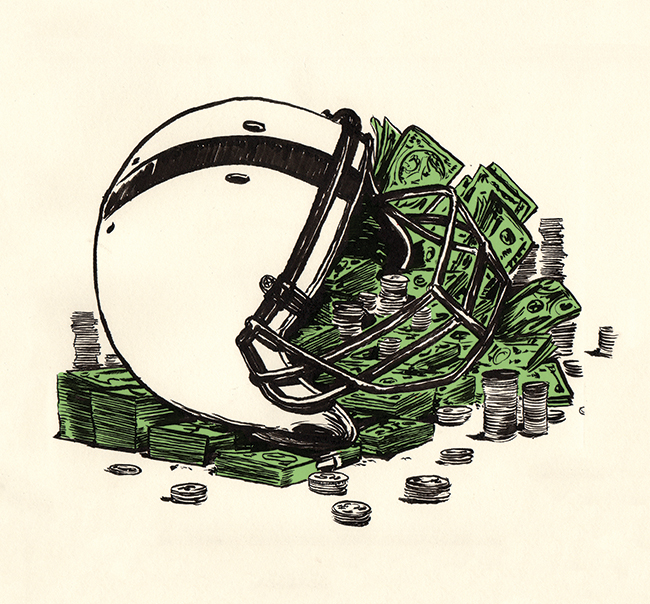Zeitguide to the NFL’s Woes

At the office water cooler, it might be tough for you to find anyone ready to talk about the big football game. The NFL experienced a 13% drop in viewers for its Thursday night opener, and declines on its Sunday broadcasts on CBS and Fox.
The NFL wants to double its revenues by 2025, so this is a troubling trend. In 2016, the league blamed the presidential election for its lower ratings. This year, the scapegoat is Hurricane Irma news. But such justifications mask a more troubling possibility: Interest in the NFL has peaked and shrinking viewership is the new norm.
Watching football games on TV, to the NFL’s credit, got noticeably better this year. Games get four commercial breaks in each quarter instead of five, and a “double box” split-screen shows ads on one side and replays on the other. As a result, most of last weekend’s games took less than three hours.
Still, consider what else is chipping away at football’s popularity. Some fans are turned off by players who are using their visibility during the national anthem to protest social injustice. Other fans are tuning out due to the possibility the league blackballed the first player to do so, former 49ers quarterback Colin Kaepernick. Meanwhile the NFL keeps winding up in court fighting for its right to suspend players for on- and off-field misbehavior. The league has so alienated its players union over this issue, a strike is likely when their contract expires in 2021.
Those problems seem quaint next to the NFL’s primary existential threat: the near guarantee that football causes lasting brain damage. A headline-grabbing study of the brains of 111 deceased NFL players found signs of CTE, a degenerative brain condition brought on by repeated strikes to the head, in 110 of them.
A handful of players have retired early citing concern for their brain health. Participation in high school football is down 2.5% this year. That’s to say nothing of the untold number of parents now steering younger kids into other sports. Fans, too, have begun to question the ethics of supporting a sport they know harms players.
And we haven’t even gotten to the issue of the quality of play. To reduce the opportunity for head blows, teams have limited practice time or eliminated full-contact practices entirely. But diminished preparation has been widely blamed for the poor quality of the games at the start of this season.
The NFL has its work cut out for it. It needs to grow ratings even as people watch less TV. It wants players to be community pillars without protesting injustice. And it wants to make a game more exciting even as we question whether anyone should be playing it at all.
